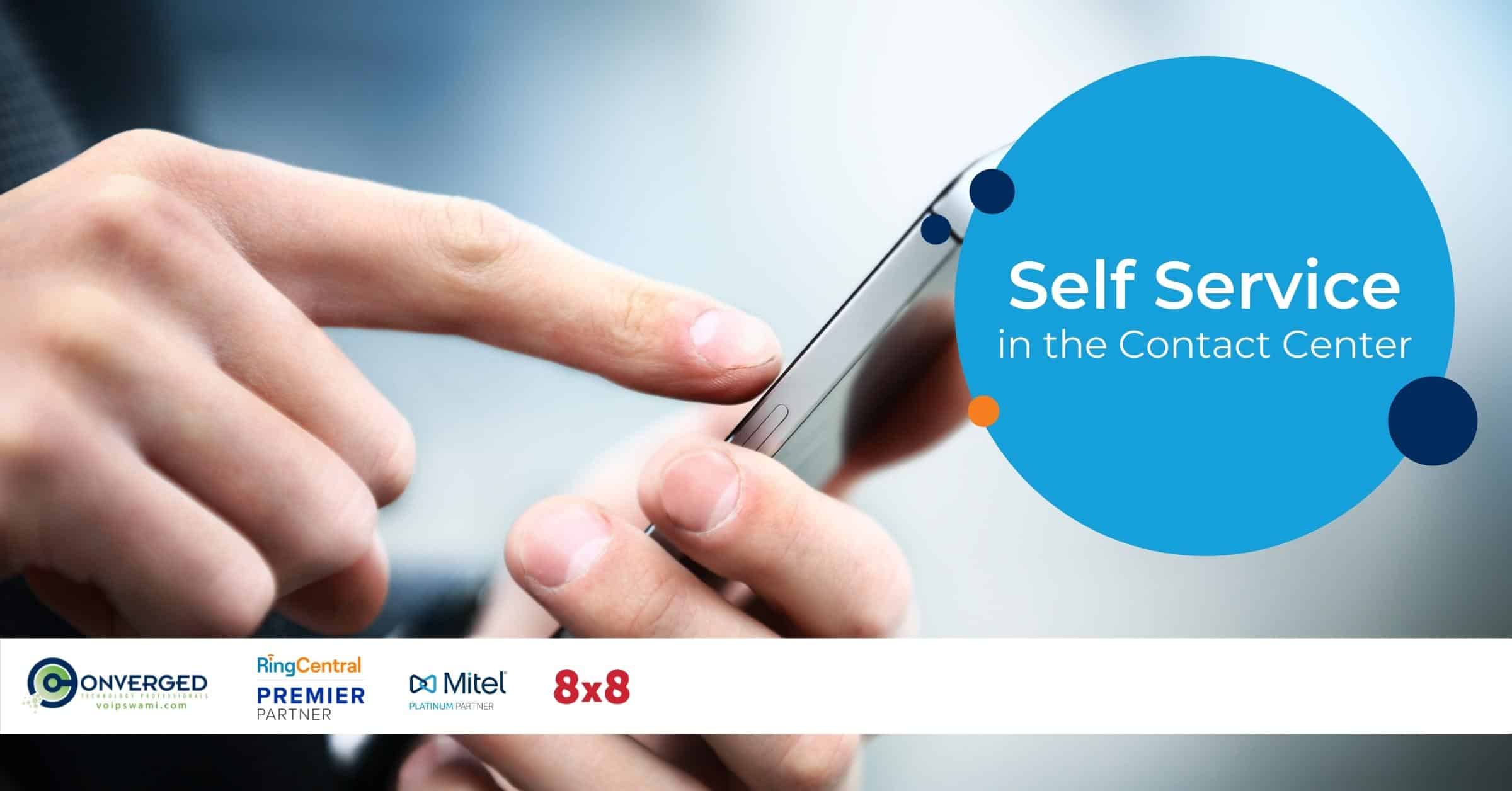
The importance of cloud-based contact centers for customer service is growing. In 2022, 80% of companies intend to hire more customer service staff, with just 1% of companies planning to downsize.
This growth represents a new need for fast, accurate solutions to customer complaints and queries. Yet expanded hiring doesn’t necessarily improve the efficiency or quality of contact center operations.
When service agents are forced to handle routine and repetitive tasks—such as inputting account information, answering basic questions, or authenticating users—overall response quality suffers. These inefficiencies can lead to a cycle in which companies hire more support staff to handle these tasks, without tackling the underlying issues that delay call completion.
Self-service is the key to improving contact center efficiency for the long-term. Rather than simply increasing the amount of workers, self-service lets customers find help on their own, utilizing technology to optimize their search. Call center staff are able to handle complex or unique issues while customers gain a faster, more responsive system for resolving their queries.
Key Technologies for Self-Service
Perhaps the most visible customer-facing self-service technology is chatbots, which expect to see a 169% increase in adoption by 2026. These chatbots are already a consistent presence on many company web pages, offering a quick and effective way to find answers and receive support.
Chatbots offer everything from customer service to technical support as well as billing and account creation. There’s no need for an agent to read from a script when a chatbot can provide the same information at no cost to the company.
Yet these digital agents are not the end-all of self-service. There will always be a contingent of customers who prefer a live agent for even their most simple requests.
Moreover, a chatbot is only as good as its knowledge base. If there isn’t enough information in the database to deliver a response, the customer will have to seek an alternative. This oversight is often where a digital interaction turns into a contact center request and a cost for the company to handle. Luckily, self-service technology can also augment the customer experience over the phone, leading to superior results at a lower cost.

Connecting Self-Service and Live Agents
When a customer calls in for support, AI-backed technologies can verify the request, identify the product or service, and handle routine troubleshooting. CX employees leave these tasks to their virtual assistants rather than handling each step themselves, as they’ve done in the past.
Modern systems can even use voice verification to authenticate users or ask the customer for account details on their own. If the call is eventually transferred to a live agent, the CX representative can respond more effectively since necessary information has already been verified and sent to the agent’s screen.
Better yet, if the customer previously interacted with a chatbot or other digital self-service technology, this information too will be passed onto the rep. There’s no need to have users repeat the purpose of their calls when the chat’s transcript is readily available at the agent’s fingertips.
Implementing these self-service technologies into a contact center can save 60-90 seconds per call, representing hundreds of hours saved across thousands of customer interactions. By reducing an agent’s workload of repetitive tasks, companies also lower the chances of burnout for their valued CX teams, leading to greater retention and additional cost savings for their contact centers.
Improving Self-Service in 2022
Augmenting the capabilities of a chatbot or other self-service technology means improving its ability to understand customer wants. This insight relies on an iterative approach—more customer interactions mean more historical data to rely on when addressing a request.
CX teams have a role to play in this expansion as well. By reviewing the transcripts and surveying user interactions, companies can provide the right types of videos, FAQs, and other content that solve key pain points in the self-service process. Chatbots can identify which type of customer complaint, question, or request merits a particular type of content, or users can opt to find this content on their own if they prefer more independence.
Having a robust library of content improves both the customer’s ability to access information, as well as the self-service technology’s capability to deliver solutions. Connecting these digital and AI-backed robotics with live agents leads to the best experience yet for customers demanding the highest level of service quality.
Implementing Self-Service for Your Organization
Leveraging all the capabilities of self-service requires a unified approach. To learn more about reducing call times and increasing efficiency throughout your call center, contact us today and see how a modern UCaaS solution can benefit your organization.
If you enjoyed this article you may also enjoy:
